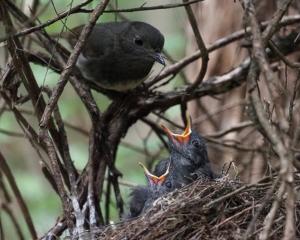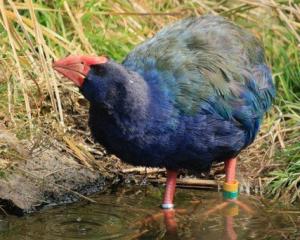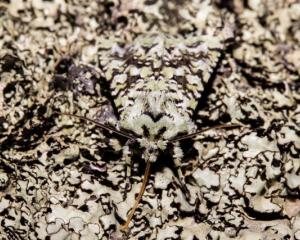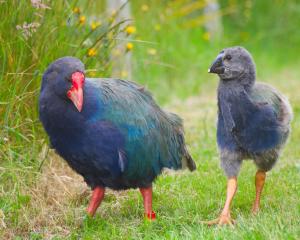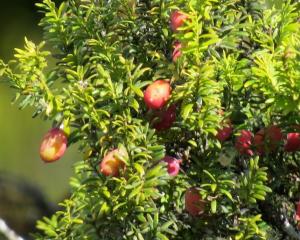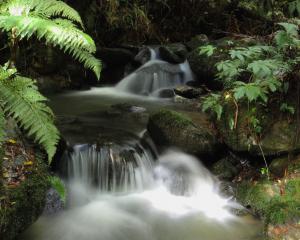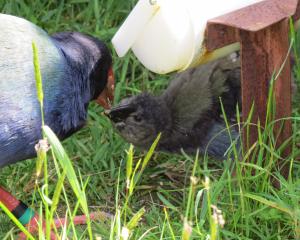Before endangered species can be moved to a safe haven such as Orokonui Ecosanctuary, some serious science has to be carried out. Zoology student Luke Easton is involved in a project assessing the feasibility of moving Hochstetter's frogs to Orokonui.
The day begins with an hour-long off-road drive into the heart of Torere Forest, a remote area in the Raukumara Range, near Opotiki in the Bay of Plenty.
From the road it is another 20-minute hike down a very steep gully in a pine plantation, but on this particular day it is raining and misty, so our visibility is low.
After arriving at our study site, we look down at the cobble rocks precariously stacked in the stream and discuss how we are going to survey it safely.
Slipping and sliding through the mud, we reach the rocky edge and begin our search for one of the world's most evolutionarily distinct and globally endangered species.
It is not long before we find one.
At first glance there seems to be nothing under the rock, but as we peer closer, the outline of a Hochstetter's frog (Leiopelma hochstetteri) becomes apparent.
We quickly capture the frog and place it in a plastic bag so it can be weighed and its body length measured.
Hochstetter's frogs (compared with the Australian frogs we are most familiar with in New Zealand) are unique, as they have no ears, do not croak, have only slight webbing on their hind feet, and have big round pupils in their eyes.
Not many people get to see this species as they are found only in forest streams in the upper half of the North Island and in very fragmented populations.
Sadly, like many other New Zealand threatened species, they are at risk from many threats, but specifically habitat loss.
In Torere Forest, pine harvesting is due to start in the next two years. Approximately 2700ha of pine trees will be removed, right where these frogs live.
Talks of a potential translocation of these frogs (i.e. moving them to another site) prior to tree harvesting have occurred, although translocations are not simple, as all aspects of the species' biology, ecology, genetics, population dynamics, and negotiations with stakeholders must be accounted for.
Such moves are also not a solution to a conservation problem; instead they are a tool to manage threatened species.
Nevertheless, in the event a translocation is carried out in the near future, one of the main aims of this study is to assess the feasibility of releasing Hochstetter's frogs from Torere Forest into Orokonui Ecosanctuary.
Firstly, we investigated whether there was a suitable habitat at Orokonui.
One important concept about identifying suitable habitat, however, is that when a species exists in a certain area, it does not mean the habitat is optimal.
Rather, it could be that the species has no choice but to live in low-quality habitat because of human impacts.
We therefore measured habitat features (e.g. percentage of rock cover, number of logs, etc) in both pine plantations and native forests within Torere Forest and compared these to the habitat present in Orokonui.
Fortunately, a suitable habitat was identified in the ecosanctuary.
While this is encouraging, habitat is not just vegetation or stream substrate.
Microclimates must also be considered, given that frogs are ectotherms (i.e. they rely on external temperatures as a source of body heat); thus the cooler temperatures at Orokonui may be challenging for these frogs from the warmer North Island.
Hence it was important to assess how cooler temperatures may influence how these frogs respond physiologically, such as the ability to digest food.
Therefore, we also exposed captive frogs to cooler temperatures representative of an Orokonui winter day (approximately 7degC) in the lab.
Specifically, we were interested in whether digestion of food could take place, and if so, how long it would take.
We found food was retained for longer in cooler conditions (up to 41 days) and that digestion was dependent on peaks in temperature.
Therefore, it is possible Hochstetter's frogs could survive in an environment such as Orokonui.
Overall, it is too early to confirm whether Orokonui is suitable for these frogs, as more research needs to be completed, but rest assured stakeholders remain actively involved in protecting this threatened frog population from what is yet to come.
• Luke Easton's master's degree project draws on the research described here, being carried out by zoology students under the supervision of Prof Phil Bishop, department of zoology, University of Otago.


